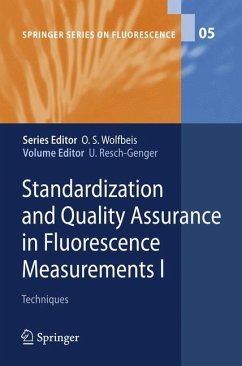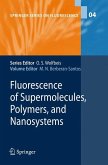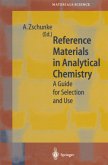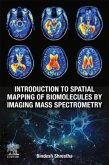Analytical chemists and materials scientists will find this a useful addition to their armory. The contributors have sought to highlight the present state of affairs in the validation and quality assurance of fluorescence measurements, as well as the need for future standards. Methods included range from steady-state fluorometry and microfluorometry, microscopy, and micro-array technology, to time-resolved fluorescence and fluorescence depolarization imaging techniques.
The validation and standardization of fluorescence methods is still in its infancy as compared to other prominent analytical and bioanalytical methods. Appropriate quality assurance standards are however a prerequisite for applications in highly regulated fields such as medical diagnostics, drug development, or food analysis.
For the first time, a team of recognized international experts has documented the present status of quality assurance in fluorescence measurements, and outlines concepts for establishing standards in this field.
This first of two volumes covers basic aspects and various techniques such as steady-state and time-resolved fluorometry, polarization techniques, and fluorescent chemical sensors.
The validation and standardization of fluorescence methods is still in its infancy as compared to other prominent analytical and bioanalytical methods. Appropriate quality assurance standards are however a prerequisite for applications in highly regulated fields such as medical diagnostics, drug development, or food analysis.
For the first time, a team of recognized international experts has documented the present status of quality assurance in fluorescence measurements, and outlines concepts for establishing standards in this field.
This first of two volumes covers basic aspects and various techniques such as steady-state and time-resolved fluorometry, polarization techniques, and fluorescent chemical sensors.
From the reviews:
"The aim of this book is to cover in considerable detail the general principles of standardization of fluorescence measurements as well as the application of these principles to both mature and cutting-edge applications. ... This book is highly recommended for those who develop or utilize fluorescence-based techniques and want their measurements to be as accurate, as meaningful, and as traceable as possible." (Jonathan E. Kenny, Journal of American Chemical Society, Vol. 131 (10), 2009)
"The aim of this book is to cover in considerable detail the general principles of standardization of fluorescence measurements as well as the application of these principles to both mature and cutting-edge applications. ... This book is highly recommended for those who develop or utilize fluorescence-based techniques and want their measurements to be as accurate, as meaningful, and as traceable as possible." (Jonathan E. Kenny, Journal of American Chemical Society, Vol. 131 (10), 2009)








